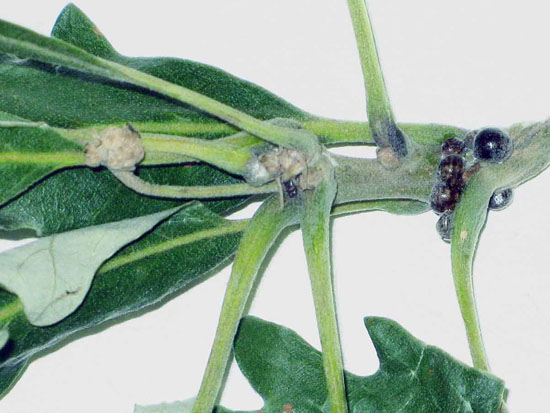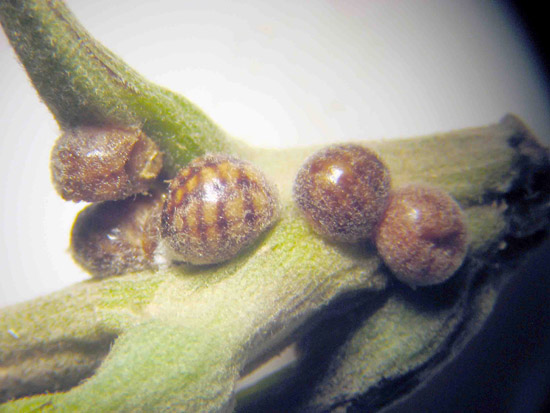Issue 6, May 29, 2012
Kermes Scale
Kermes scales are occasionally found on pin, white, bur, and other oaks in Illinois. They are most common on or near the branch tips and appear gall-like, so they are commonly misidentified as galls. They also tend to feed in leaf axils, so they are sometimes misidentified as buds. The taxonomy of kermes scale species is uncertain because early work relied heavily on color patterns, which we now know are variable. There are approximately 30 species of kermes that occur in North America, but identification is difficult. This goes beyond academic gymnastics, as different species produce crawlers at different times during the growing season.
Control of scale insects relies on insecticide application to the unprotected newly hatched nymphs or crawlers. At least one species produces crawlers in July, but crawlers of other species hatch in September. However, all species overwinter as first stage nymphs on the bark of trunks and branches, making them susceptible to dormant oil application. Apply dormant oil when the tree is dormant and when the temperature does not drop below freezing for the next 24 hours after application.
On white and bur oak, kermes scale tends to cause twisting, crooking, and other distortion of the branch tip. Leaves are also misshapen and twisted, and some of the leaves die. Damage is noticed from the ground as scattered branch tips appearing whitish and/or brownish due to dead leaves and the leaf distortion revealing more leaf undersides. The scales feed at the base of petioles, on leaf veins, and at twig crotches. The scale is rounded and about one-eighth inch in diameter. Although the scales are brownish, they frequently appear blackish due to a coating of sooty mold. Sooty mold is a black fungus that grows on the honeydew, the partially digested and concentrated plant sap excreted by many scale insect species.

Kermes scale on Bur oak.
Kermes scales have recently been seen on bur oak in Illinois. These scales tend to be located on the twigs at or near leaf buds and at twig crotches near branch tips. They are rounded and up to one-quarter inch in diameter. They vary in color from dark brown to tan with dark brown banding. Leaf and branch distortion is not evident, but they cause noticeable branch tip droppage.

Close-up view of Kermes scale on Bur oak.
Overall, infested trees grow slower and are twiggy and bushier due to terminal damage and subsequent lateral branch development. Kermes scales are native insects, and their populations are kept in check by several natural enemies including a parasitic wasp, a lady beetle, and a predatory caterpillar. Although almost all caterpillars are herbivorous, there are a few species of moths whose larvae feed on other insects. (Phil Nixon)
Author:
Phil Nixon